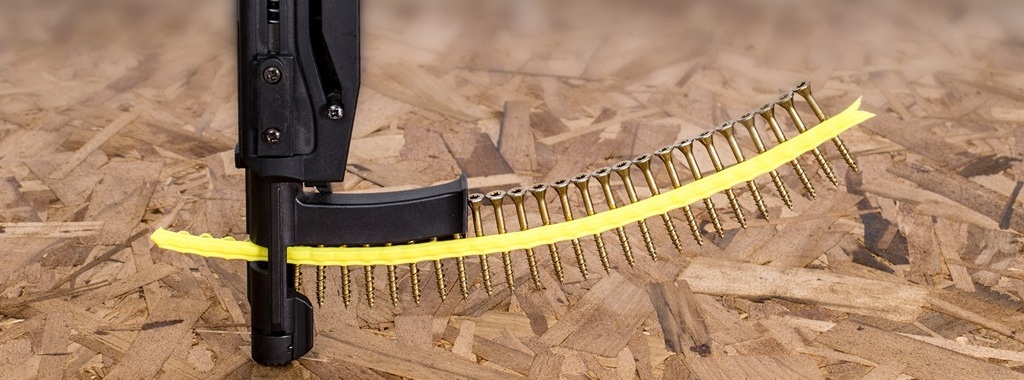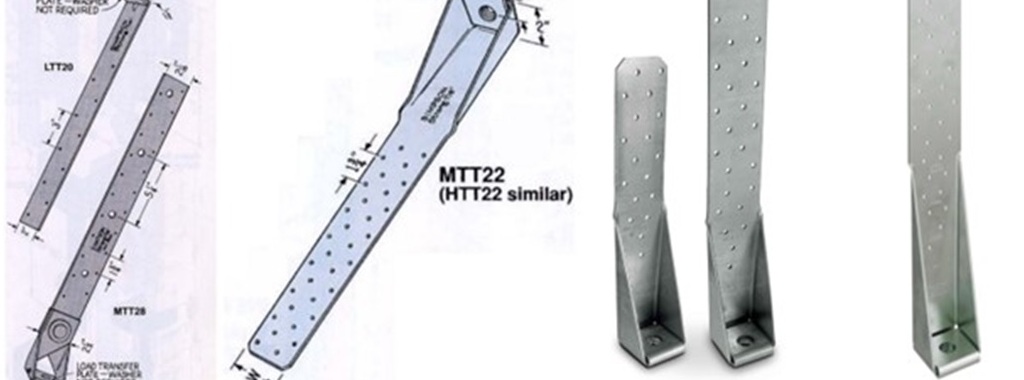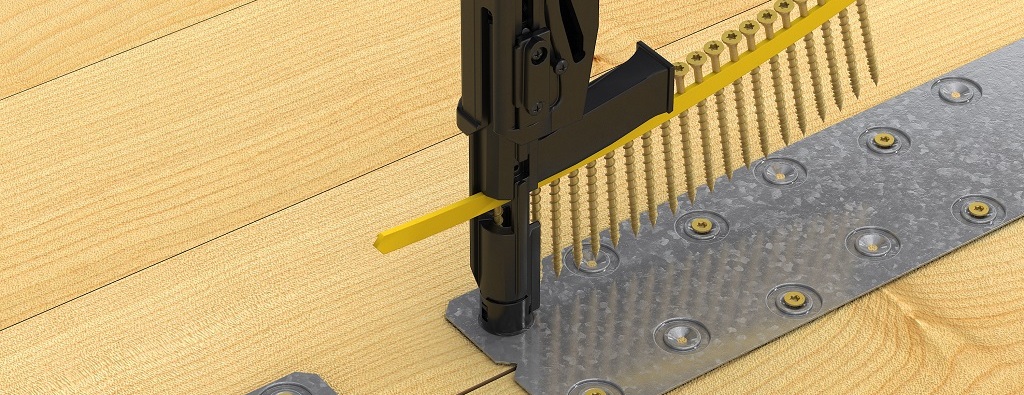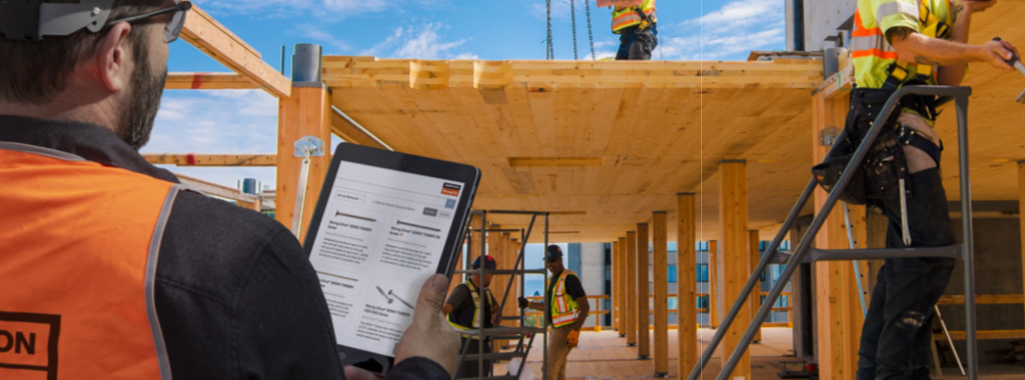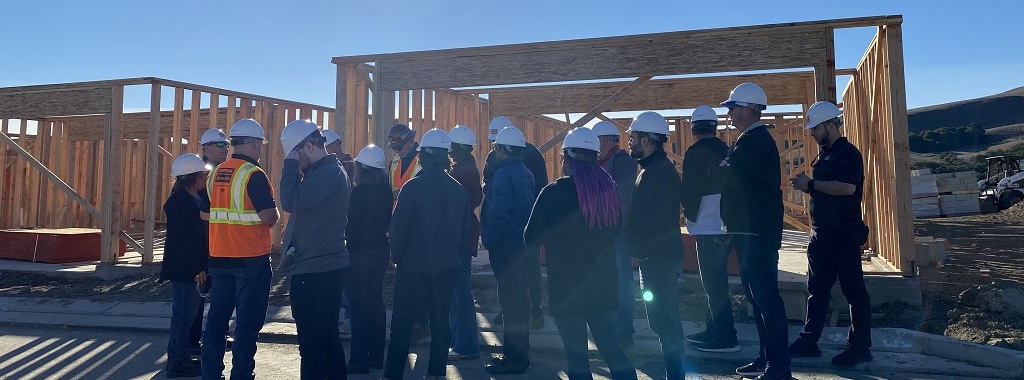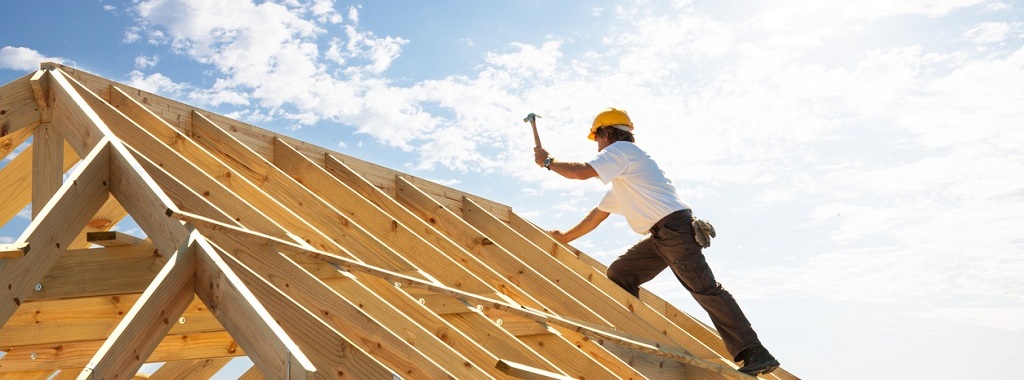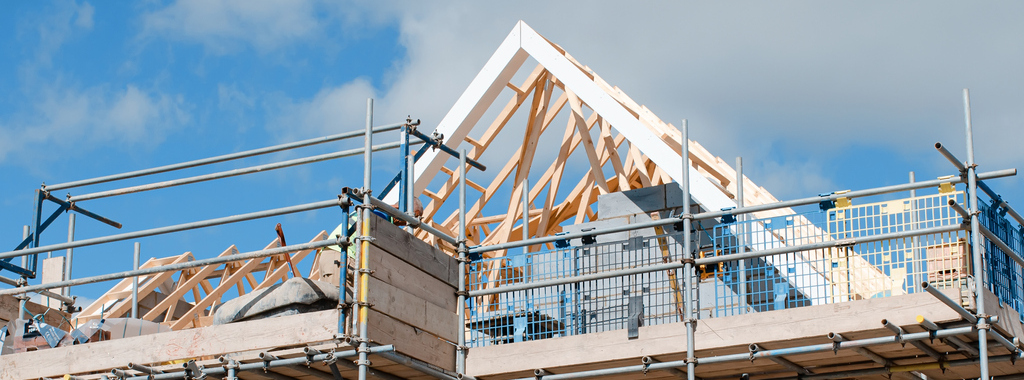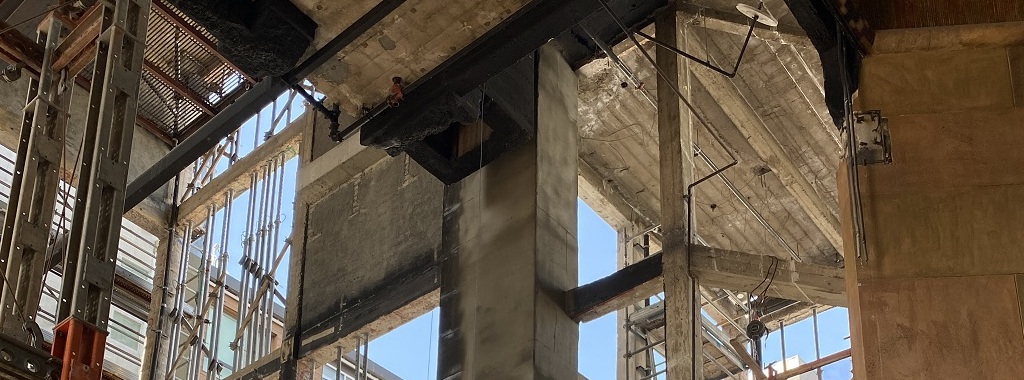When Simpson Strong-Tie set out to re-engineer their Strong-Drive® WSV Subfloor screw, the plan was to bring a code-evaluated, no-squeak, no-glue all screw replacement for sheathed horizontal wood-frame diaphragms to the market. We knew that these collated fasteners, which were designed for fast subfloor installation using the auto-feed Quik Drive® system, were going to be an ideal replacement for 8d and 10d nails. The only thing left to do was to prove it…
Tag: construction
Introducing the HTTH6.5 Heavy Tension Tie: Engineered to Meet the Most Demanding Conditions
The HTTH6.5 heavy tension tie (Figure 1) is designed to meet the growing demands of modern construction. This product combines state-of-the-art design with rigorous testing, offering a robust and reliable solution for high-load applications. Its painstaking engineering and precision manufacturing ensure superior performance even in the most demanding conditions.
Mass Timber Diaphragm Options with Four Different Connection Types — How Our LDSS48 Light Diaphragm Spline Strap Evolved
Floors and roofs on mass timber buildings are constructed from large panels of engineered wood, such as cross-laminated timber (CLT) or mass plywood. Designers join these prefabricated panels together on site to create a structural horizontal diaphragm to transfer wind and seismic loads to the vertical elements of the lateral force resisting system. Shear forces between panels must be transferred through these panel-to-panel connections. Conventional wood structural panel sheathed diaphragms have shear capacities and fastener spacing tabulated in Special Design Provisions for Wind and Seismic (AWC SDPWS). Mass timber diaphragms, on the other hand, require some more design work by the designer.
Simpson Strong-Tie Engineer to Talk on Mass Timber Construction and Design
Simpson Strong-Tie is proud to announce that one of our product engineers, Bonnie Yang, Ph.D., P.E., CFS, has been invited to give a public lecture on mass timber connections. The date of her lecture will be March 3 at 11 a.m. PST. Yang’s lecture will be part of a Mass Timber mini-lecture series hosted by the School of Architecture at Mississippi State University in partnership with the Mississippi Forestry Association.
A Passion to Create and to Preserve — One Engineering Student’s Journey
Starting a career can be daunting. Luckily, Anthony Hagiu’s current role as a Simpson Strong-Tie Technical Support Representative is helping him create a knowledge base that he can use toward his ambition to become an engineer. Learn more about what inspired him to study engineering and what he hopes to do once he finishes school.
What Is the Buy America Act?
Simpson Strong-Tie Senior Field Engineer Nehal Patel breaks down the Buy America Act- passed in 1933, which requires the federal government to buy American–made iron, steel, and manufactured goods wherever possible. He dives into the legislative action and how it relates to Simpson Strong-Tie.
Top Structural and Wood-Related Changes in the 2021 IRC, Part 2
In the last post, we described the primary structural and wood-related changes in the 2021 International Residential Code, Chapters 3 and 4. This post will continue with the primary changes to Chapters 5 through 8 of the IRC.
Top Structural and Wood-Related Changes in the 2021 IRC, Part 1
The ICC code change cycle for the 2024 International Codes is near completion, with only the certification by the Validation Committee and confirmation by the ICC Board of Group B results outstanding. However, many jurisdictions may just now be adopting the 2021 International Codes. This is the first of three posts that will discuss the primary structural and wood-related changes in the 2021 International Residential Code and International Building Code. This post covers changes to IRC chapters 3 and 4, organized by subject. Continue Reading
Project Snapshot Series Part 1: Historic Theatre Retrofit Using FRP
Structural renovation work continues on a historic, 1920s-era building in Hollywood, California. This major renovation will improve the structural performance of the building and help ensure that theatregoers and other occupants are safe in the event of a major earthquake.
Mechanical Anchors: Screw vs. Expansion: — Which Is Right for Me?
Not all post-installed mechanical anchors are created equal. There are key differences between screw and expansion anchor types — differences that include how they gain their holding strength, installation requirements, and overall anchor performance. In the following post, field engineers Todd Hamilton, Chris Johnson and Derek Gilbert compare the two anchor types.



